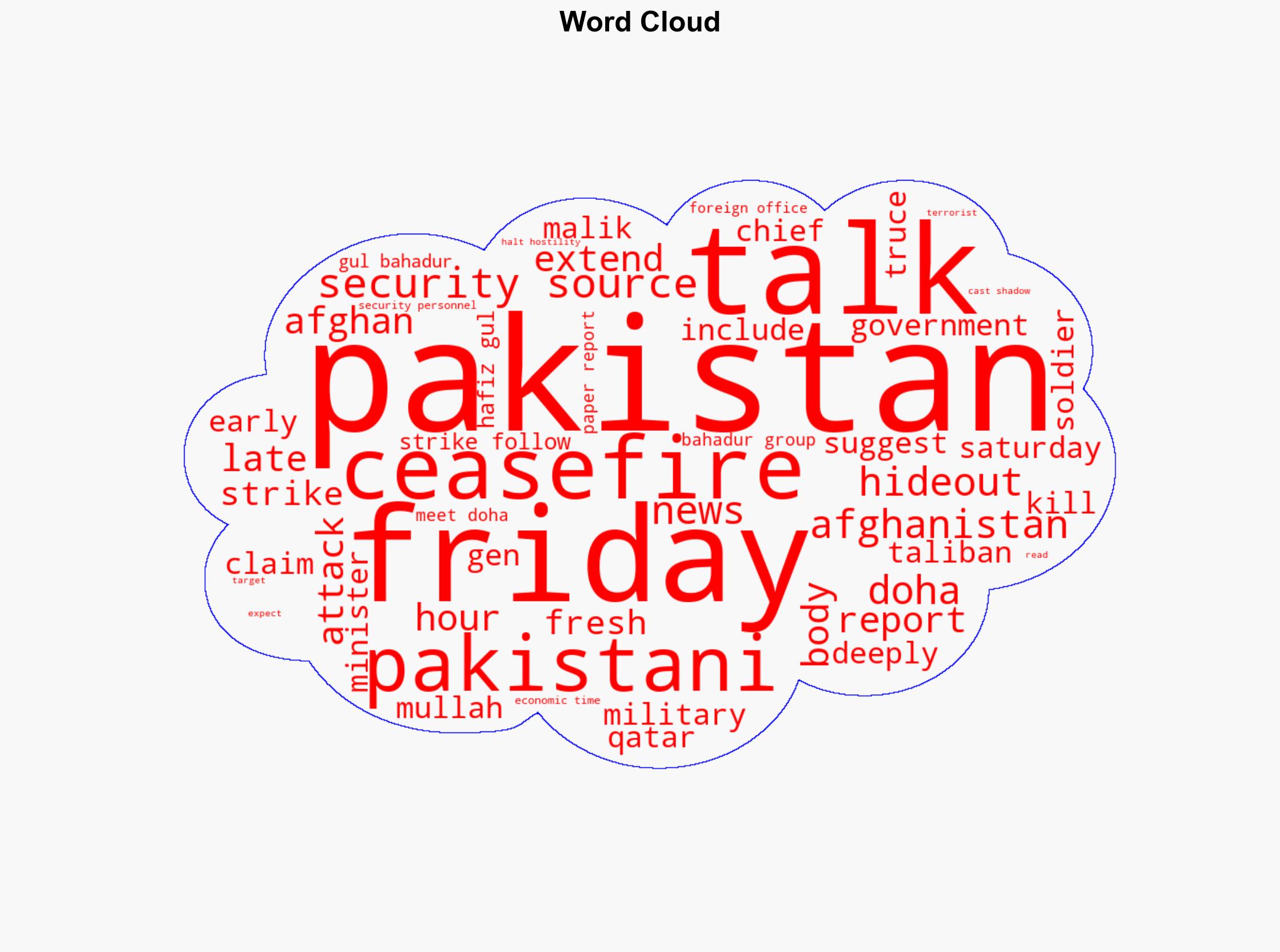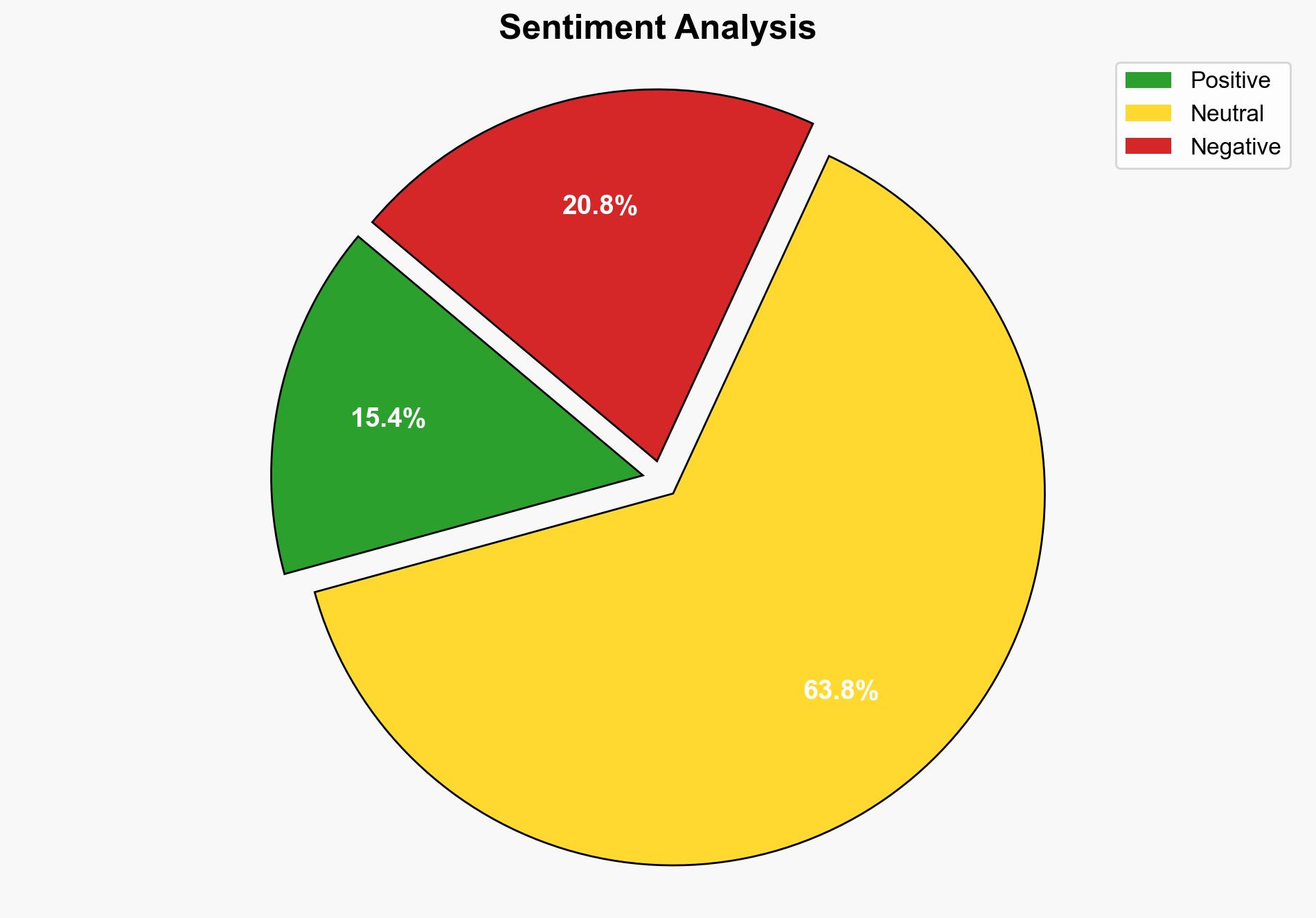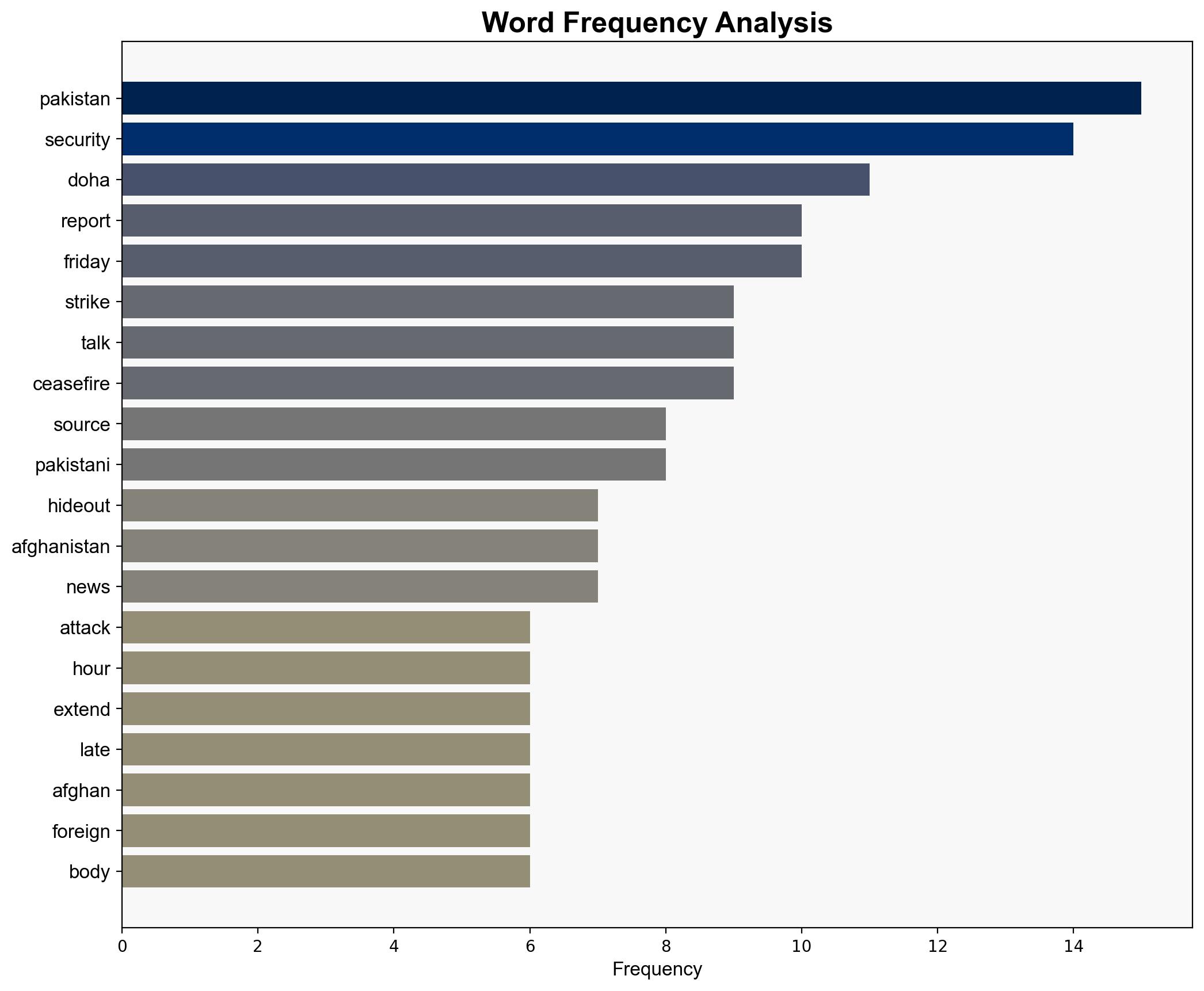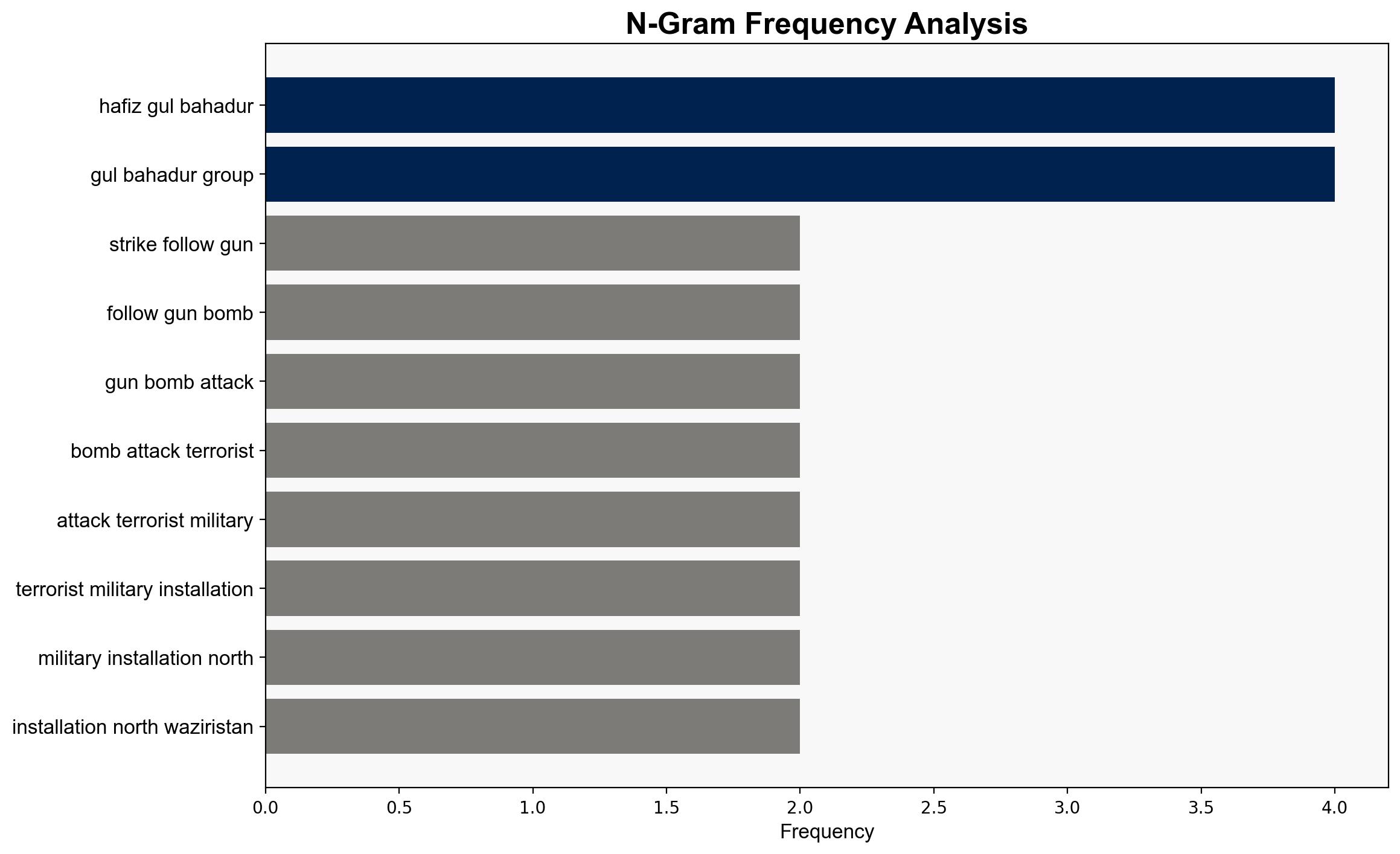Pakistan strikes terrorist hideouts in Afghanistan Report – The Times of India
Published on: 2025-10-18
Intelligence Report: Pakistan strikes terrorist hideouts in Afghanistan Report – The Times of India
1. BLUF (Bottom Line Up Front)
The most supported hypothesis is that Pakistan’s airstrikes on terrorist hideouts in Afghanistan are a strategic response to recent terrorist attacks on its military installations, aiming to weaken the Hafiz Gul Bahadur group and Tehreek-e-Taliban Pakistan (TTP) while maintaining leverage in upcoming Doha talks. Confidence Level: Moderate. Recommended action includes diplomatic engagement to de-escalate tensions and ensure the ceasefire holds, while preparing for potential retaliatory actions from militant groups.
2. Competing Hypotheses
1. **Hypothesis A**: Pakistan’s airstrikes are a direct retaliation for the recent terrorist attacks on its military installations, intended to disrupt the Hafiz Gul Bahadur group and TTP’s operational capabilities before the Doha talks.
2. **Hypothesis B**: The airstrikes are a strategic maneuver by Pakistan to assert dominance and influence in the region, leveraging the ceasefire and upcoming talks in Doha to gain concessions from Afghanistan and international stakeholders.
Using ACH 2.0, Hypothesis A is better supported by the immediate timing of the strikes following the attacks and the focus on specific militant groups responsible for recent violence. Hypothesis B is less supported due to the lack of direct evidence linking the strikes to broader geopolitical strategies beyond immediate security concerns.
3. Key Assumptions and Red Flags
– **Assumptions**: It is assumed that the Hafiz Gul Bahadur group and TTP are the primary actors behind the recent attacks and that Pakistan’s military actions are solely retaliatory.
– **Red Flags**: The possibility of misinformation or propaganda influencing public perception and the lack of independent verification of the strike’s success and casualties.
– **Blind Spots**: Potential involvement of other regional actors or internal political pressures within Pakistan influencing the decision to strike.
4. Implications and Strategic Risks
The airstrikes risk escalating tensions between Pakistan and Afghanistan, potentially undermining the ceasefire and Doha talks. There is a risk of retaliatory attacks by militant groups, which could destabilize the region further. The situation may also affect regional alliances and international diplomatic efforts, with potential economic and security implications.
5. Recommendations and Outlook
- Engage in diplomatic efforts to reinforce the ceasefire and facilitate constructive dialogue in Doha.
- Enhance intelligence-sharing mechanisms with regional and international partners to monitor potential retaliatory threats.
- Scenario Projections:
- Best Case: Successful talks in Doha lead to a strengthened ceasefire and reduced militant activity.
- Worst Case: Escalation of violence leads to broader regional conflict and breakdown of diplomatic efforts.
- Most Likely: Continued low-level skirmishes with intermittent diplomatic progress.
6. Key Individuals and Entities
– Hafiz Gul Bahadur
– Mullah Yaqoob Mujahid
– Mullah Wasiq
– Asim Malik
– Ishaq Dar
7. Thematic Tags
national security threats, counter-terrorism, regional focus, geopolitical strategy




